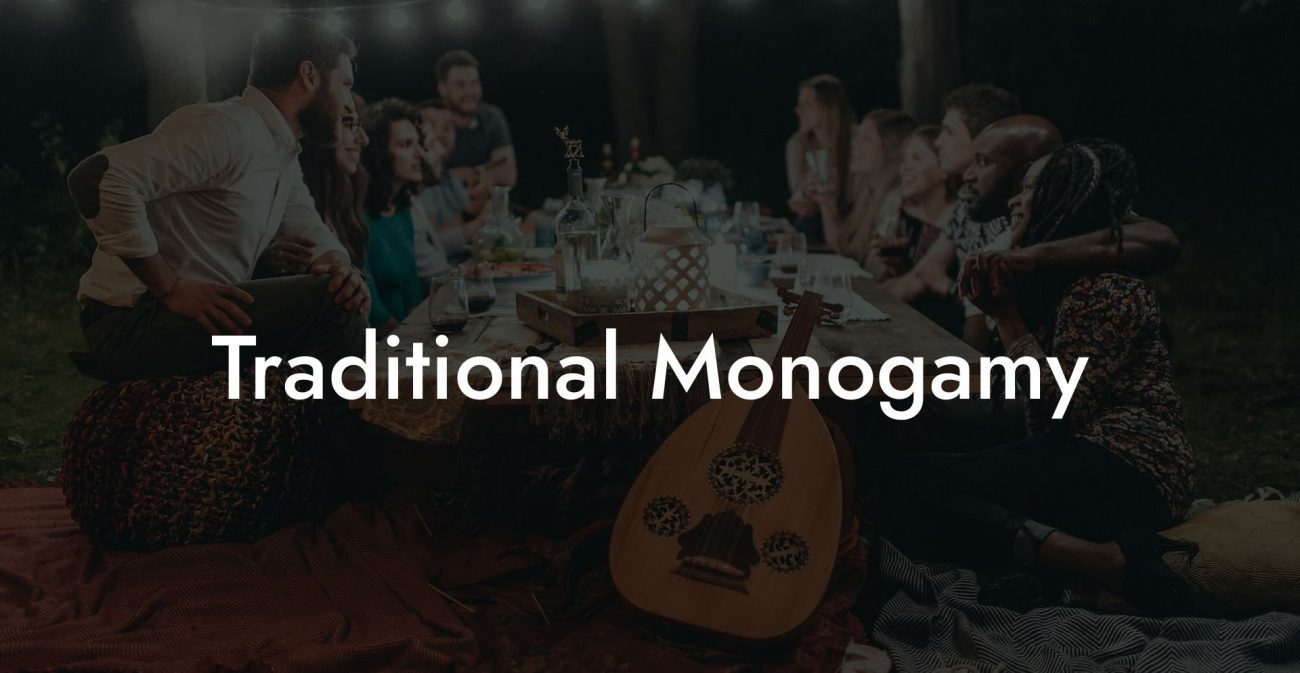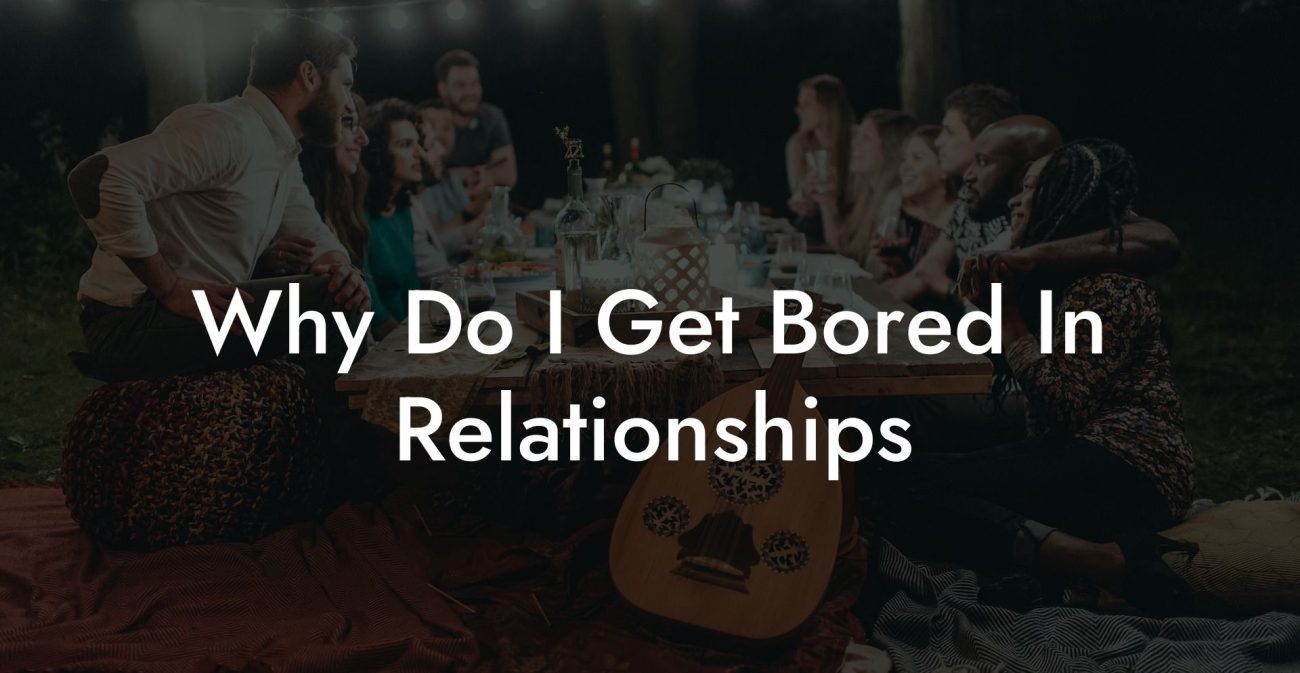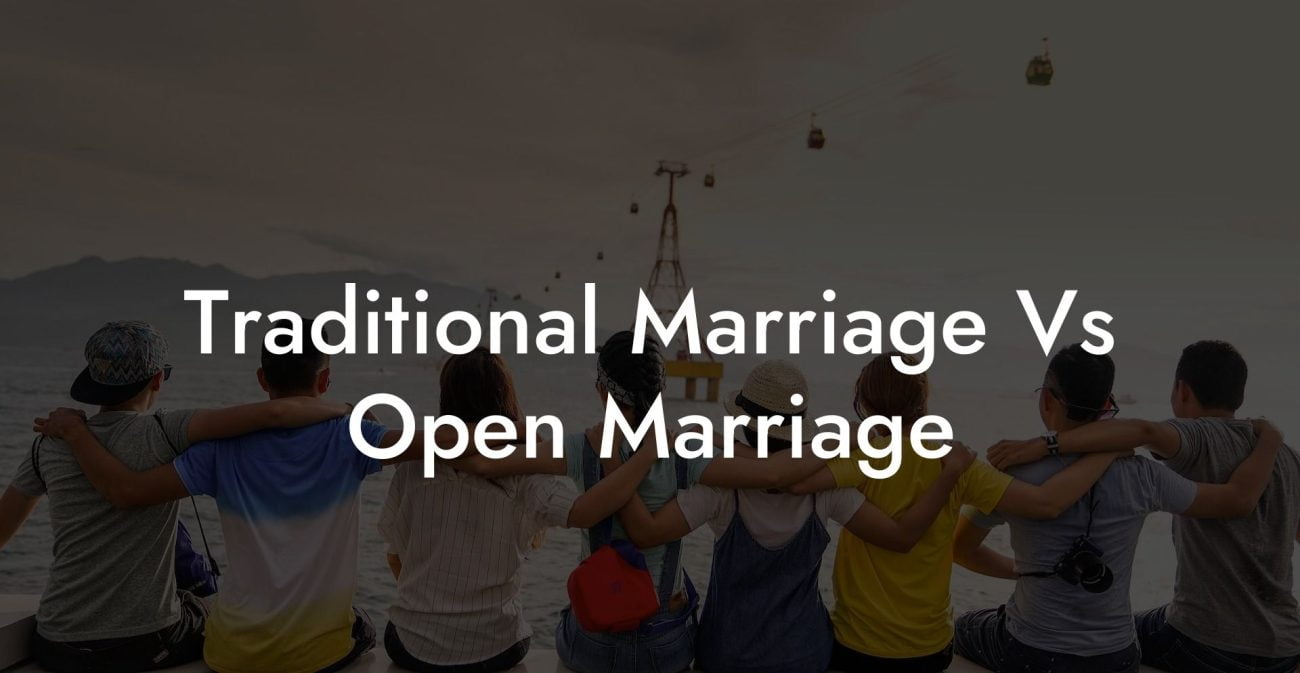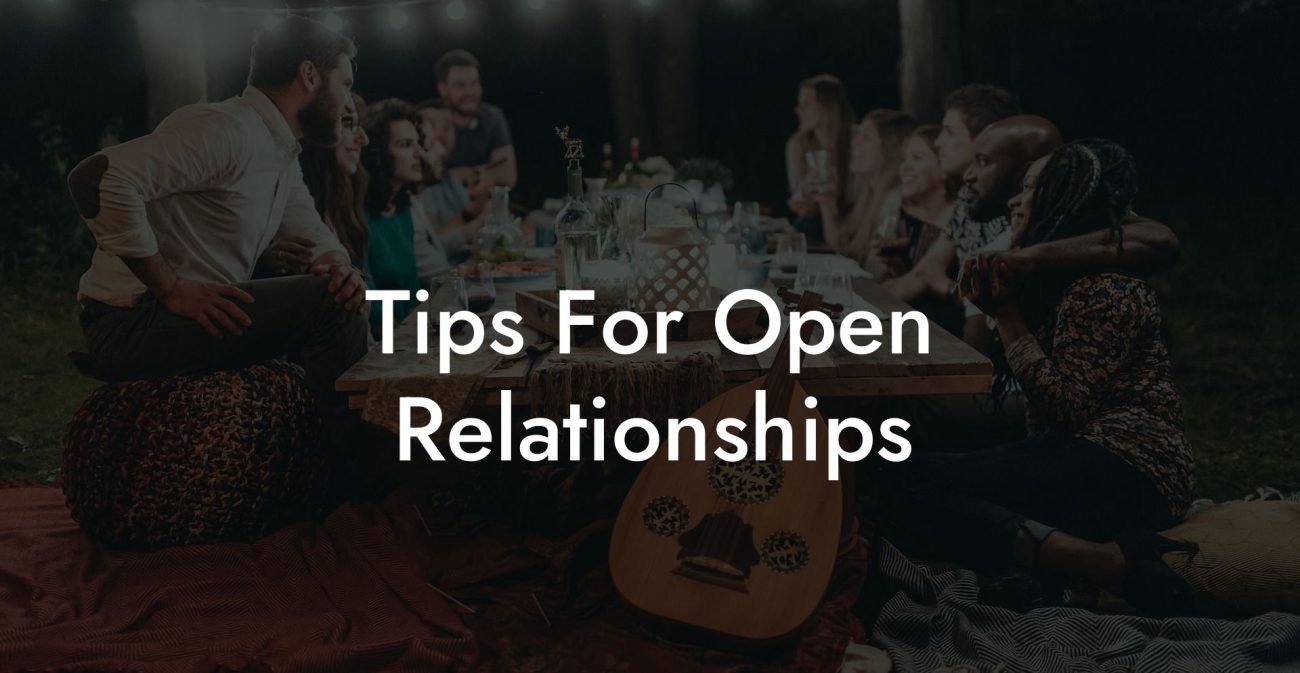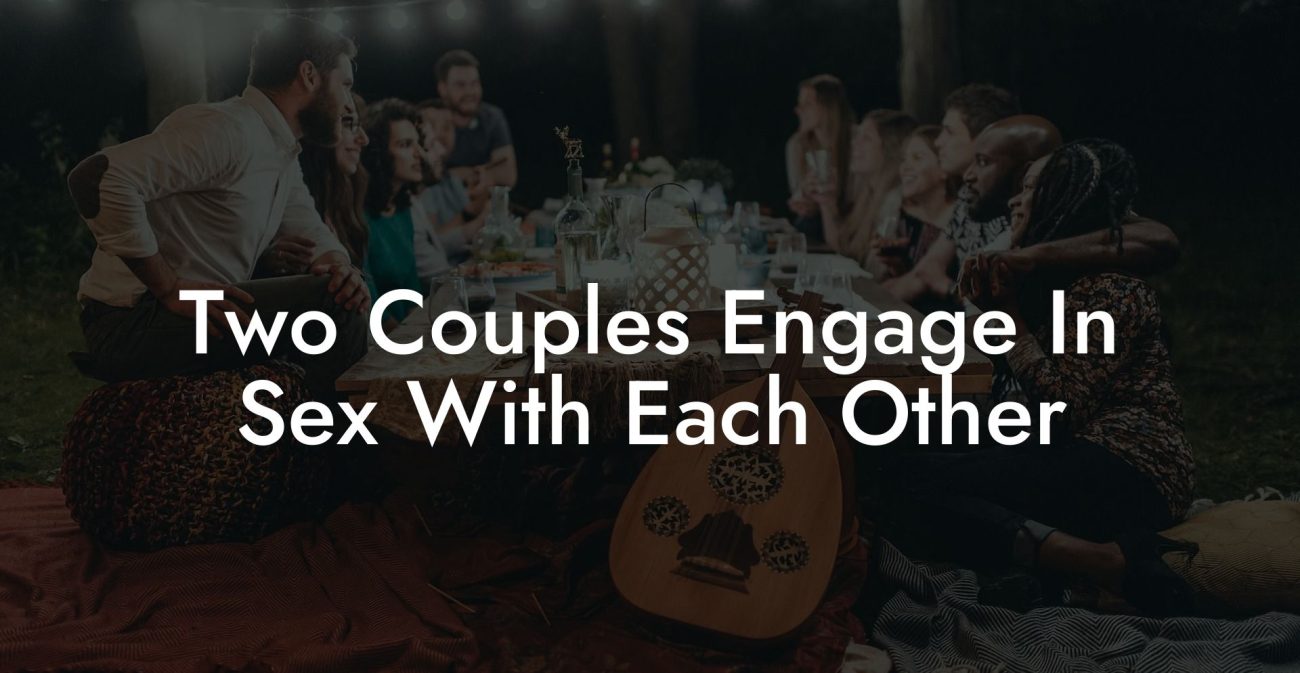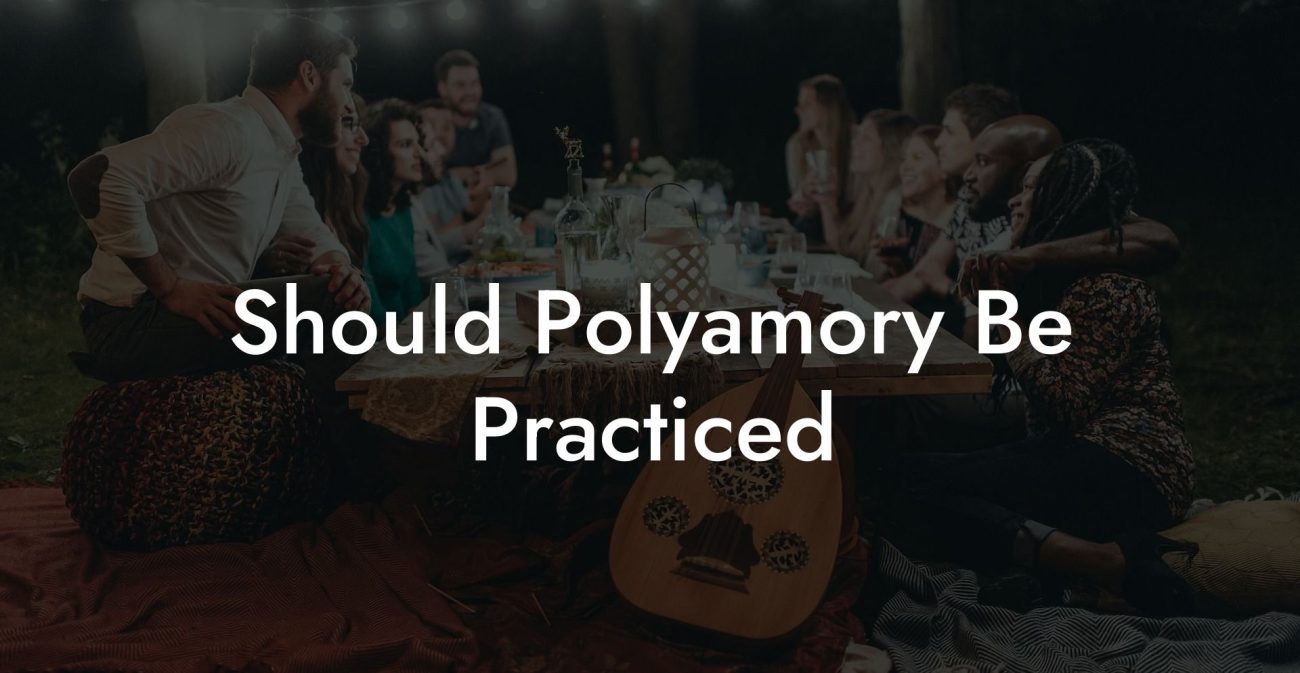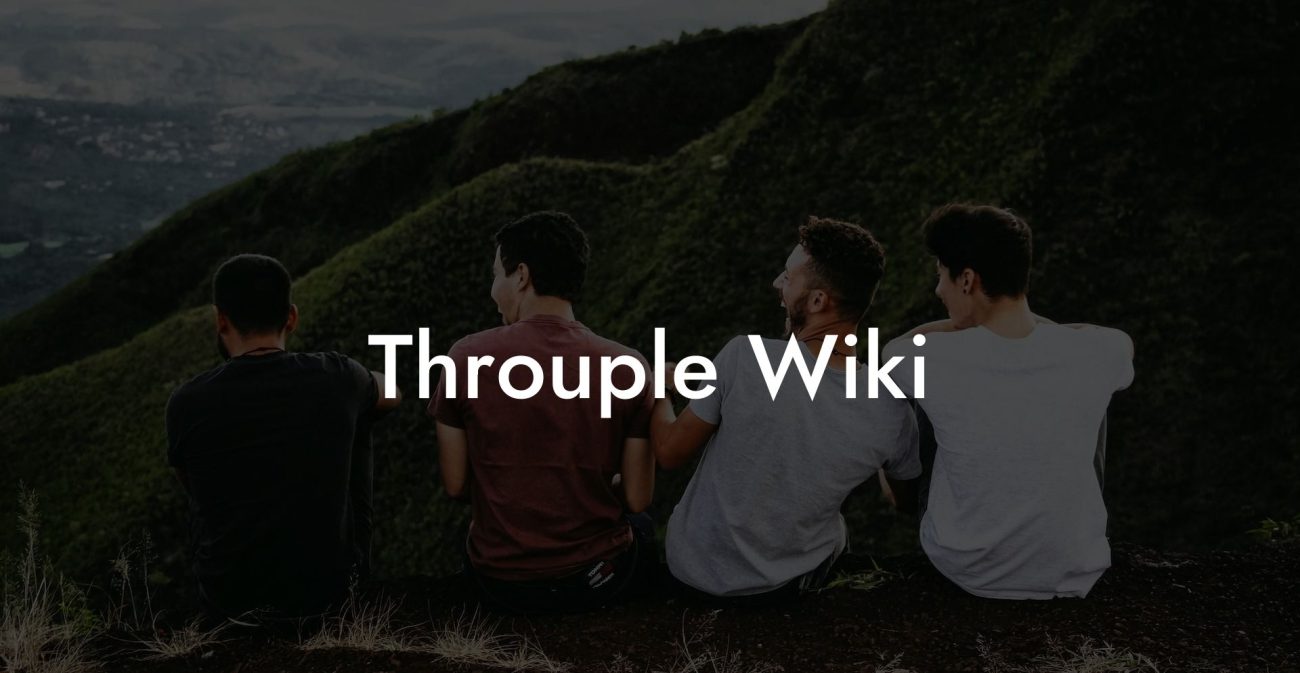Guide to Can A Polyamorous Person Become Monogamous?

Have you ever found yourself reflecting on your relationship journey and wondered if the dynamic of polyamory might eventually give way to a deeper, more singular connection? Whether you’re experiencing a shift in your emotional needs or simply curious about exploring a more exclusive form of love, this guide is here to help you navigate the complex terrain of transitioning from polyamory to monogamy. With honest insights, practical steps, and a touch of humor, we’ll explore how a polyamorous person can become monogamous, what that journey might look like, and the factors to consider when making such a profound change.
Quick Links to Useful Sections
- Understanding the Foundations: Polyamory vs. monogamy
- What Is Polyamory?
- What Is Monogamy?
- Exploring the Motivation: Why Transition?
- Personal Growth and Evolving Needs
- Seeking Emotional Depth and Stability
- Managing Time and Energy
- Is Transitioning Possible? Examining the Journey
- The Possibility of Change
- Key Factors to Consider
- Self-Reflection: Discovering What You Truly Want
- Questions to Guide Your Introspection
- Communication and Negotiation: Talking to Your Partners
- Initiating the Conversation
- Negotiating boundaries and Transition Plans
- Practical Steps for Transitioning
- Step 1: Reflect and Journal
- Step 2: Educate Yourself
- Step 3: Initiate Honest Conversations
- Step 4: Create a Transition Plan
- Step 5: Seek Professional Guidance
- Step 6: Embrace Patience and Flexibility
- Challenges You Might Face and How to Overcome Them
- Managing Residual Jealousy
- Adjusting to a New Dynamic
- Dealing with Social Expectations
- Real-Life Stories: Personal Journeys from Polyamory to Monogamy
- Case Study: Jamie’s Transition
- Case Study: Alex and Taylor’s Mutual Shift
- Expert Insights: What Relationship Professionals Say
- Advice from Therapists and Coaches
- FAQ: Your “Can A Polyamorous Person Become Monogamous?” Questions Answered
- Resources and Community Support: Your Next Steps in Self-Discovery
- Top Books, Podcasts, and Blogs
- Therapy and Counseling
In a world where love comes in many shapes and sizes, your relationship style isn’t fixed in stone, it can evolve as you grow and as your needs change. This guide will help you understand the key differences between polyamory and monogamy, examine the motivations behind such a transition, and offer practical advice for managing the emotional and logistical challenges along the way.
Understanding the Foundations: Polyamory vs. monogamy
What Is Polyamory?
Polyamory is the practice of engaging in multiple romantic or sexual relationships simultaneously, with the full knowledge and consent of everyone involved. It’s built on principles of open communication, flexibility, and the idea that love can be abundant rather than limited. Polyamorous relationships are as diverse as the people who practice them, they can range from fluid and casual to deeply committed and structured.
Common keywords in the polyamorous world include ethical non-monogamy, open love, and multiple relationships. For many, polyamory is a way to explore different facets of their personality and emotional life, experiencing a rich tapestry of connections.
What Is Monogamy?
Monogamy, in contrast, is the traditional model of forming an exclusive, one-on-one relationship. It centers on the idea of dedicating your emotional and physical energy to a single partner, building deep, long-term intimacy and trust. Monogamous relationships often provide a sense of stability and security, with a focus on shared goals, long-term planning, and undivided attention.
Keywords associated with monogamy include exclusive commitment, deep intimacy, and long-term partnership. For many, this model offers the comfort of predictability and a straightforward approach to love.
Exploring the Motivation: Why Transition?
Personal Growth and Evolving Needs
As you journey through life, your emotional and relational needs may shift. Some polyamorous individuals eventually find that managing multiple relationships becomes emotionally draining or that they crave the deep, undivided connection offered by monogamy. This change is often a natural evolution, a reflection of your personal growth and a desire to simplify your emotional landscape.
Transitioning can also be a response to life changes. Whether you’re considering starting a family, moving to a new city, or pursuing a demanding career, the simplicity and focus of monogamy might align better with your current goals.
Seeking Emotional Depth and Stability
While polyamory offers variety and a breadth of experiences, it sometimes comes with complex emotional dynamics and the constant negotiation of boundaries. If you’re finding that these complexities are overshadowing your need for stability and deep emotional intimacy, you might be ready for a transition to monogamy. The promise of a singular, focused relationship can provide the stability and depth you’re seeking.
Managing Time and Energy
Juggling multiple relationships can be incredibly rewarding but also time-consuming and energetically taxing. If you’re feeling stretched too thin or finding that the logistics of polyamory are overwhelming, transitioning to monogamy can allow you to invest more fully in one partnership, fostering a sense of balance and well-being.
Is Transitioning Possible? Examining the Journey
The Possibility of Change
The short answer is yes, a polyamorous person can become monogamous. However, this transition is deeply personal and may not follow a linear path. It involves a lot of introspection, honest dialogue with your partners, and sometimes professional guidance. Transitioning isn’t about rejecting your past; it’s about aligning your relationships with your current needs and values.
Remember, your relationship style can evolve. What worked for you at one stage in life might not suit your current desires. Allow yourself the freedom to change, adapt, and redefine your connections without judgment.
Key Factors to Consider
Several factors can influence your decision to transition from polyamory to monogamy:
- Emotional Readiness: Are you prepared for the deep, focused emotional investment that monogamy requires?
- Relationship Goals: Do your long-term aspirations align more with a singular, exclusive partnership?
- Communication Skills: Can you openly discuss your evolving needs with your current partners?
- External Life Changes: Consider how career, geography, and family plans might influence your capacity for multiple relationships.
Self-Reflection: Discovering What You Truly Want
Questions to Guide Your Introspection
Answer these questions honestly to help you determine whether a shift toward monogamy is right for you:
- What are my core relationship priorities? Do I value deep, undivided intimacy over variety?
- How do I feel when I manage multiple relationships? Do I feel energized by diversity or overwhelmed by complexity?
- What do I envision for my future? Am I excited by the idea of building a life with one person, or do I thrive on multiple connections?
- How do I handle emotions like jealousy and insecurity? Would a singular focus provide more peace?
- What feedback have I received from my partners? Have your discussions hinted at a mutual desire for exclusivity?
Taking the time to reflect on these questions through journaling or discussions with trusted friends or a therapist can offer clarity on your evolving desires.
Communication and Negotiation: Talking to Your Partners
Initiating the Conversation
If you’re considering transitioning to monogamy, the next step is to have open, honest conversations with your current partners. Here are some strategies to help:
- Plan a Dedicated Discussion: Set aside a quiet time to talk about your feelings and intentions without distractions.
- Use “I” Statements: Express your desires and concerns from your perspective to avoid placing blame.
- Be Prepared for Emotions: Understand that these conversations may be emotional. Approach them with patience and empathy.
- Discuss Future Goals: Clearly outline what a monogamous relationship might look like for you and how it aligns with your long-term aspirations.
Negotiating boundaries and Transition Plans
Once the conversation is underway, work together to create a transition plan that respects everyone’s needs. Consider:
- Gradual Phasing Out: Instead of an abrupt change, discuss gradually reducing the number of external relationships.
- Setting New Boundaries: Define what exclusivity means for your new dynamic, and agree on the boundaries that will guide your monogamous relationship.
- Regular Check-Ins: Schedule follow-up meetings to review how the transition is progressing and make adjustments as needed.
Practical Steps for Transitioning
Step 1: Reflect and Journal
Start by dedicating time to introspection. Use a journal to document your thoughts, feelings, and reasons for considering a shift. Reflect on your past experiences and identify what aspects of polyamory no longer serve you.
Step 2: Educate Yourself
Dive into resources, books, podcasts, and blogs, that explore both polyamory and monogamy. Understanding the nuances of each relationship model can help you clarify your desires. Consider classics like "The Ethical Slut" and "More Than Two" for varied perspectives.
Step 3: Initiate Honest Conversations
With your reflections in hand, sit down with your current partners. Share your evolving needs openly and listen to their feedback. Remember, this isn’t about blaming anyone, it’s about aligning your relationship with your current self.
Step 4: Create a Transition Plan
Work together to develop a clear plan for transitioning. This might include timelines for phasing out external relationships, setting new boundaries, and scheduling regular relationship check-ins to ensure everyone feels secure.
Step 5: Seek Professional Guidance
If the transition feels overwhelming, consider seeking help from a relationship therapist or coach experienced in non-traditional relationship dynamics. Professional guidance can offer tools to manage emotions and facilitate healthy communication.
Step 6: Embrace Patience and Flexibility
Understand that transitions take time. Be patient with yourself and your partners, and allow the new dynamic to evolve naturally. Celebrate small victories and remain open to revisiting and adjusting your agreements as needed.
Challenges You Might Face and How to Overcome Them
Managing Residual Jealousy
Even if you decide that monogamy is right for you, lingering feelings of jealousy from your polyamorous past might surface. Address these emotions by engaging in self-reflection, open conversations, and, if necessary, seeking professional help.
Adjusting to a New Dynamic
Transitioning to monogamy means redefining your relationship routines and expectations. This adjustment can be challenging, but with clear communication and mutual support, you can create a fulfilling exclusive partnership.
Dealing with Social Expectations
Society often has strong opinions about relationship models. Whether you’re moving from polyamory to monogamy or vice versa, external judgment can add pressure. Surround yourself with supportive communities and remember that your journey is personal and valid.
Real-Life Stories: Personal Journeys from Polyamory to Monogamy
Case Study: Jamie’s Transition
Jamie, who had long embraced a polyamorous lifestyle, eventually found that the emotional complexity and time management challenges were overwhelming. After much self-reflection and open discussions with all involved, Jamie decided to transition to monogamy. With the support of a therapist and regular check-ins with their primary partner, Jamie successfully navigated the shift toward a deep, singular connection. Though the process was emotional and required adjustment, Jamie now enjoys a more focused and stable relationship.
Case Study: Alex and Taylor’s Mutual Shift
Alex and Taylor, both experienced in polyamory, began to feel that their most fulfilling connection was with each other. They decided together to narrow their focus and pursue monogamy. By gradually phasing out other relationships and establishing clear new boundaries, they were able to transition smoothly. Their story highlights the importance of mutual decision-making, honest communication, and the willingness to evolve together.
Expert Insights: What Relationship Professionals Say
Advice from Therapists and Coaches
Relationship experts emphasize that transitioning from polyamory to monogamy is not a failure or a step backward, it’s a natural evolution of your emotional needs. Dr. Samantha Lee, a therapist specializing in diverse relationship models, explains, “People grow and change, and it’s important to honor that evolution. Transitioning to monogamy can lead to deeper intimacy and stability if both partners are committed to honest communication and renegotiation of boundaries.”
Relationship coach Marcus Reed adds, “The key is to approach the transition with compassion and understanding for all parties involved. It’s a journey of self-discovery that can ultimately lead to a more focused and fulfilling relationship.”
FAQ: Your “Can A Polyamorous Person Become Monogamous?” Questions Answered
1. Is it possible for a polyamorous person to become monogamous?
Yes, many people successfully transition from polyamory to monogamy through honest self-reflection, open communication with their partners, and, if needed, professional guidance.
2. What are the main reasons someone might want to make this transition?
Common reasons include a desire for deeper emotional intimacy, a need to simplify one’s life, and shifting long-term goals such as starting a family or pursuing a shared future.
3. How do I know if I’m ready for monogamy?
Reflect on your emotional needs and experiences. If you find that managing multiple relationships is overwhelming or if you crave a deeper, exclusive connection, you might be ready for monogamy.
4. How should I talk to my current partners about this change?
Initiate honest and calm conversations using “I” statements. Explain your evolving needs, listen to their feelings, and work together to negotiate a transition plan that respects everyone’s emotions.
5. What challenges might I face during this transition?
Challenges may include managing residual jealousy, adjusting to a new relationship dynamic, and dealing with external judgments. Regular check-ins and possibly professional guidance can help you navigate these challenges.
6. Will transitioning to monogamy mean I lose my identity?
Not at all. Transitioning is about aligning your relationships with your current needs and values, it’s a natural part of personal growth and doesn’t negate your past experiences.
7. How important is professional guidance during this process?
Professional support can be very valuable. A therapist or relationship coach experienced in both polyamorous and monogamous dynamics can provide tools to manage emotions and facilitate healthy communication.
8. Can a monogamous relationship fulfill all my emotional needs?
Many people find that focusing on one primary partner allows for deeper emotional intimacy and fulfillment. It all depends on open communication and mutual understanding.
9. How do I handle societal expectations during the transition?
Society may have strong opinions, but the most important thing is that your relationship reflects your authentic self. Seek support from communities that understand your journey and stay true to your values.
10. Where can I find more resources on transitioning from polyamory to monogamy?
Books like "The Ethical Slut" and "More Than Two", podcasts such as “Multiamory,” and online communities on Reddit and Facebook offer extensive insights and support for those considering this transition.
Resources and Community Support: Your Next Steps in Self-Discovery
Top Books, Podcasts, and Blogs
To further explore your evolving relationship style, consider these resources:
- "The Ethical Slut" by Dossie Easton & Janet Hardy – A foundational read for understanding non-traditional relationships.
- "More Than Two" by Franklin Veaux & Eve Rickert – Offers deep insights into polyamory and the emotional dynamics of multiple relationships.
- Podcasts: Listen to shows like “Multiamory” and “The Polyamory Podcast” for personal stories and expert advice.
- Online Communities: Join Reddit forums like r/polyamory and Facebook groups dedicated to relationship self-discovery for shared experiences and support.
Therapy and Counseling
Consider consulting a therapist or relationship coach who specializes in both polyamorous and monogamous dynamics. Professional guidance can help you navigate your emotions, manage the transition, and build a relationship style that aligns with your authentic self.
With thoughtful self-reflection, open communication, and the right resources, you can confidently explore whether transitioning from polyamory to monogamy is the right path for you.
Lost & confused by all of the terms, types and seemingly made up 3 letter acronyms?? We've got you. Check out our Ethnical Non-Monogamy Dictionary >>
Useful Interruption: Not sure which relationship vibe fits you best? Take our Relationship Test, it’ll give you the real insight into your natural relationship style. Then, dive into our binge-worthy guides (from the tried-and-true to the “wait, that’s a thing?”) and find the perfect relationship type for your life:
- Monogamy
- Open Relationships
- Ethical Non-Monogamy
- Solo Polyamory
- Non-Hierarchical Polyamory
- Hierarchical Polyamory
- Relationship Anarchy
- Swinging
Now back to the main article but yeah take the test...



